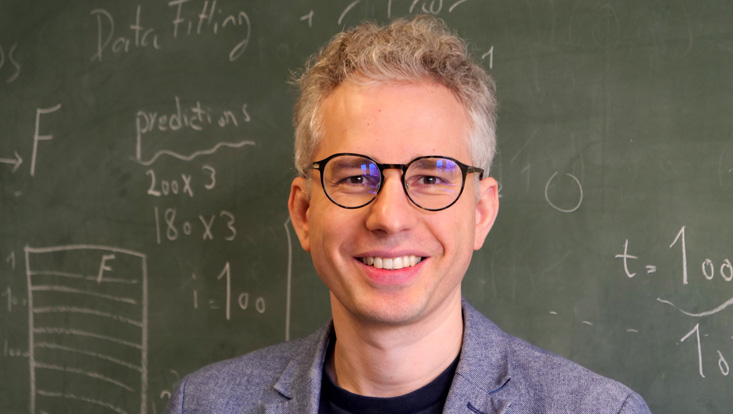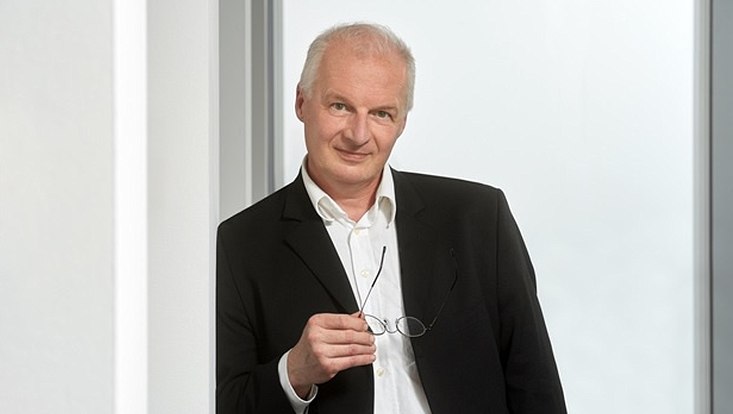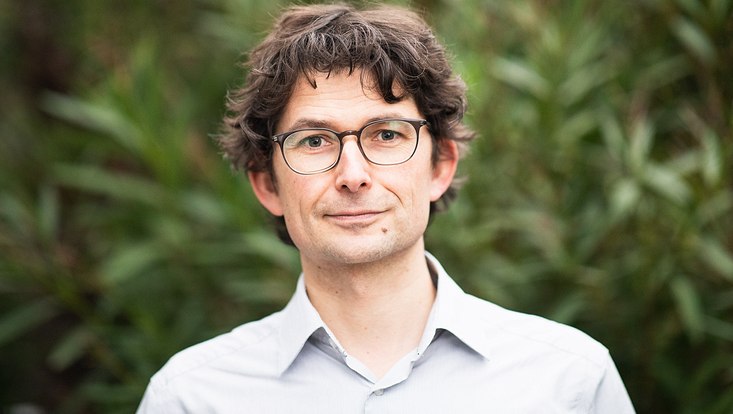Welcome aboard!“My Professorship Connects Subjects”Prof. Dr. Johannes Lederer strengthens mathematics.
13 March 2024, by Maria Latos

Photo: Universität Hamburg/MIN/Fuchs
Every year, Universität Hamburg welcomes numerous new researchers. This series introduces them and their areas of research. This time: mathematician and data scientist Prof. Dr. Johannes Lederer
This winter semester, Prof. Dr. Johannes Lederer joined the University from the Ruhr University Bochum as a W3 professor of mathematics with a focus on data-based methods in the Faculty of Mathematics, Informatics and Natural Sciences.
Mr. Lederer, you studied physics at ETH Zurich and are now a professor of the mathematics of data-based methods in Hamburg. Why did you switch from physics to mathematics?
In fact, I have switched faculties several times—I wasn’t only in physics and mathematics but also in statistics, biostatistics, and, for a short time, in business statistics. These changes demonstrate that my work often takes place between the various subjects. Data science, my research area, is, on the one hand, mathematics, but it also involves informatics and applications, for example, in biology, econometrics, or physics.
What exactly is data science then?
Data science wants to learn as much a possible from data. We humans now generate a lot of this data completely automatically, for example, with our smart phones, which constantly record many different parameters. These kinds of digitalized data are, for a start, just a salad of zeros and ones. Data science tries to identify what is relevant and interesting. By now, for example, it’s no problem to identify from the location data of smart phones when and where someone used which transport. It is often surprising how much we can interpret from data using modern methods.
How do you choose your research projects?
I see my team as a port of call for other departments and research groups on data science and AI. For example, we devise new methods for interesting lines of inquiry or develop mathematical guarantees for existing methods. This was also one reason for me coming to Hamburg: there is a fantastic environment here for this kind of cross-cutting professorship.
What questions and projects have you been focusing on since coming to Hamburg?
The latest project involves exciting cooperation on the topic of wind energy with the Hamburg University of Applied Sciences and the Fraunhofer Institut. Especially here in northern Germany wind power plants are being built almost weekly, each one often larger and more powerful than the last. And yet, these wind power plants need to reliably generate energy off our coasts for 20 years. So we are trying, on the basis of the comparatively little data available, to draw mathematically sound conclusions about the security and robustness of these plants.
Will there also be connections in teaching between mathematics, informatics, and other applications?
There is a lot of interest in data science and AI among students. That’s why I, and of course other colleagues in the faculty, are offering these kinds of courses and seminars. I am also developing collaborative teaching formats, for example, with biology. Nonetheless, I find it as important for students to get a solid educational foundation. I also advocate for this.


